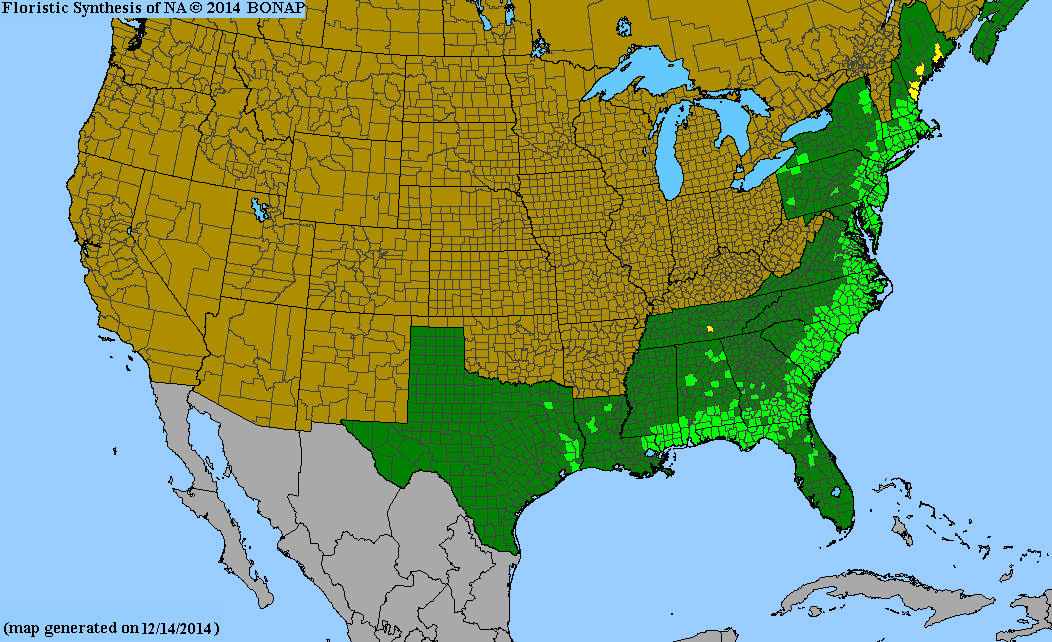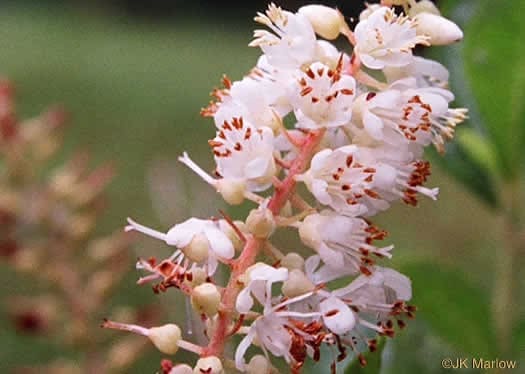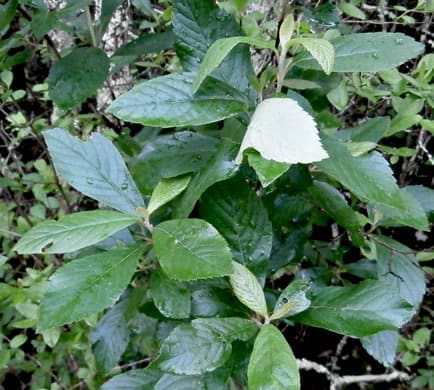Clethraceae
coastal sweet-pepperbush
Clethra alnifolia
Synonyms
Formerly known as Clethra alnifolia f. paniculata
Clethra alnifolia f. rosea
Clethra alnifolia var. denudata
Clethra bracteata
Clethra dentata
Clethra incana
Clethra paniculata
Clethra pubescens
Clethra pumila
Other Common Names
summersweet
Plant Type
Shrub (less than 10 ft)
Life Cycle
Perennial
Typical Size
5-10 ft. tall
4-6 ft. wide
Tolerant of
Occasional Flooding
Inolerant of
Dry Soil
Propagation
By cutting
Plant Propagation Notes
three to 4″ stem cuttings in early spring from softwood
Plants/Diseases
During dry periods, may experience spider mite infestations. Late season rainfall may result in Pseudocercospora leaf spot.
Wildlife Benefits
Nectar/pollen source for pollinating insects, Fruit/seeds for birds
Leaves
Leaves alternate, obovate to oblong, 5-9 x 2-4 cm. Margins toothed. Leaf surface sparsely hairy lower leaf surface, hairy upper leaf surface
Flowers
White, sometimes with a slight pink hue arranged in a single or cluster of spikes.
Bark
stems terete; scaly, dark gray to brown black bark. Young shoots finely pubescent.
Toxicity
No known toxicity.

USDA Hardiness Zones
3, 4, 5, 6, 7, 8, 9
Light Exposure
Full Sun, Part Sun/Shade, Full Shade
Soil Moisture
Medium, Moist
Soil Drainage
Well-drained, Poorly Drained
Soil pH
Acidic (less than 6.0)
Native in South Carolina?
Yes
Plant Native Habitat
Broad-leaved swamps, Chamaecyparis swamps, wet pine forests, sometimes in dry, sandy woods and rocky, acidic ridge tops
Global Conservation Status (NatureServe)
Secure (G5)
Federal Conservation Status (USFWS)
Not Listed
Distribution Notes
Common in the SC Coastal Plain and Absent from the Piedmont and Mountains


